Top 10 Most Popular Ancient Roman Temples
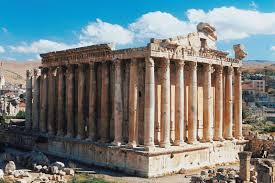
Although Roman temples are distinct from Greek temples in terms of design and order use, they are similar to Greek temples. For instance: Greek temples were on a base consisting of three steps (a stylobate), whereas Roman temples were built on an elevated plateau with a front staircase. The architecture of Roman temples was also given two new orders by the Romans: the Composite and Tuscan orders.
An overview of the most amazing ancient Roman temples that can be seen on a tour of the Mediterranean area during the ancient Roman period.
10 Most Spectacular Ancient Roman Temples
- Temple of Augustus and Livia
- Temple of Zeus at Aizanoi
- Dougga Capitol
- Garni Temple
- Temple of Augustus in Pula
- Sbeitla Forum Temples
- Maison Carree
- Palmyra
- Pantheon
- Baalbek
10. The Temple of Augustus and Livia

The Temple of Augustus and Livia, which was constructed toward the end of the first century BC, is still largely intact in the French city of Vienne. The Vienne temple was originally dedicated to Augustus, and it is very similar to the famous Roman temple Maison Carrée in Nîmes. Claudius, the Roman emperor who was born in nearby Lyon, rededicated the ancient Roman temple to his wife Livia in 41 AD.
9. The Temple of Zeus at Aizanoi

The Temple of Zeus at Aizanoi has been inhabited since 3000 BC. It became prosperous under the Roman Empire by producing wine, wool, and grain. The Temple of Zeus, the most impressive building in Aizanoi and the best-preserved Roman temple in all of Anatolia, was built in the 2nd century AD.
By renting out land near the temple, the money needed to build the temple was raised. However, the boundaries of the temple lands were not clear, and the people who worked in them refused to pay taxes. Emperor Hadrian settled the dispute, and copies of the letters that were so important to the city were later written on the temple walls.
8. Dougga Capitol
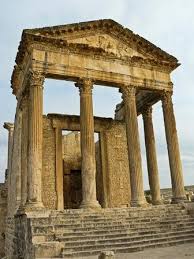
READ ALSO » 10 Famous Roman Amphitheaters In The World
Dougga Capitol Sometimes referred to as the best-preserved Roman small town in North Africa, Dougga is situated in northern Tunisia. A Punic-Libyan mausoleum, the theater, and the capitol are among the most well-known monuments at the site.
The capitol is a temple built by the Romans in the second century CE. It is primarily dedicated to the three most significant Roman gods: Minerva, Juno, and Jupiter. It also cares about the health of the emperors Marcus Aurelius and Lucius Verus.
7. Garni temple
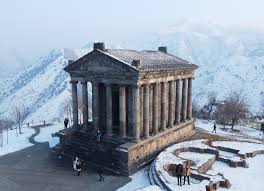
Garni Temple Built by Armenian King Trdates I in the first century AD, the Garni temple in Armenia is dedicated to Helios, the Roman sun god. The building was probably paid for with money the king got from Nero, the Roman Emperor, in exchange for helping him fight the Parthian empire in the military.
In contrast to other Greco-Roman temples, the Garni Temple is constructed of basalt and has 24 Ionic columns that are supported on an elevated podium. The ancient Roman temple was completely destroyed in 1679 by an earthquake, and it remained in ruins until it was rebuilt in the 1970s.
6. Temple of Augustus In Pula
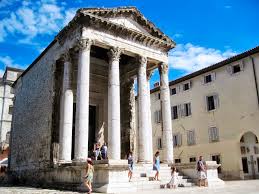
The Temple of Augustus is the only structure from the original Roman forum that is still standing. It is dedicated to Augustus, the first Roman emperor, and was probably built sometime between 2 BC and his death in 14 AD.
The temple was turned into a church and later used as a granary during Byzantine rule. When it was bombed during World War II, the temple suffered significant damage. As a result, a lot of the structure has been rebuilt since then.
5. Sbeitla Forum Temples

Sbeitla Forum Temples Sbeitla, also known as Sufetula, is a relatively intact Roman city in Tunisia's middle west. The city has a huge, almost square forum that is surrounded by a wall and paved with stone slabs. On one side of the forum, there is a gateway, and on the other side, there are three Roman temples.
READ ALSO » Top 10 Most Amazing Hindu Temples
The people of Sbeitla constructed separate temples for each of the three most important Roman gods—Jupiter, Juno, and Minerva—rather than constructing just one temple. Baelo Claudia in Spain is the only location with a similar arrangement.
4. Maison Carree
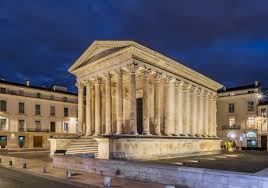
The Roman general Marcus Vipanius Agrippa built the Maison Carree Maison Carrée in Nimes, France, in 16 BC. It was dedicated to his two young sons, who both died young. It is one of the world's best-preserved Roman temples.
The Maison Carrée's exceptional state of preservation is due to the fact that it was saved from destruction when it was converted into a Christan church in the fourth century. It has also served as a storehouse, a museum, a stable, and a town hall.
3. Palmyra
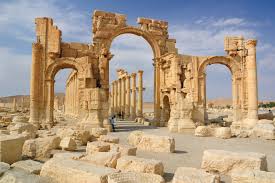
Palmyra is one of Syria's most popular tourist destinations and is included on the typical Roman tour of the country. It is located in an oasis 130 miles north of Damascus. Palmyra was a wealthy and important city that was located along the caravan routes that connected Persia and the Mediterranean ports of Roman Syria.
The enormous Temple of Bel, the monumental arch, and the colonnade that was once made up of 1,500 Corinthian columns are just a few of the many attractions that tourists can enjoy at the site today.
2. Pantheon

The Pantheon in Rome is one of the best-preserved Roman structures. It was built in 126 AD as a temple for all Roman gods. Since the seventh century, the temple has been a Roman Catholic church.
A massive circular portico with three rows of enormous granite Corinthian columns makes up the Pantheon. The portico leads to a rotunda with a central opening that is topped by a concrete dome: the eyeball. During a Roman tour, a great time to visit the Pantheon is when it is raining in Rome and you can see the rain coming in through the oculus.
1. Baalbek
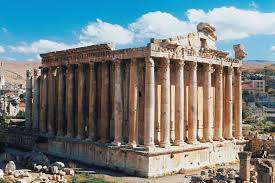
In the northeast of Lebanon is the stunning archaeological site of Baalbek, which is also known as Heliopolis. The Romans constructed three temples here over a two-century period beginning in the first century BC: Venus, Jupiter, and Bacchus.
READ ALSO » Top 10 Largest Temples In The World
The temple of Jupiter was designed to be the largest temple in the Roman empire. It was lined with 54 massive granite columns, each of which stood 21 meters (70 feet) tall. Even though only six of these massive columns are still standing, they are still quite impressive.
The Temple of Bacchus, built in 150 AD, is the site's best-preserved temple. Bacchus, also known as Dionysus, the Roman wine god, was honored in the ancient temple. It is now one of the most popular Roman tour attractions in Lebanon.
